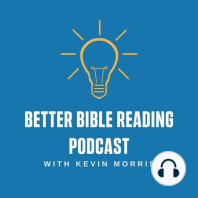56 min listen

Dynamic Diversity According to the Bible- Culturology
Dynamic Diversity According to the Bible- Culturology
ratings:
Length:
10 minutes
Released:
Aug 3, 2021
Format:
Podcast episode
Description
Dynamic Diversity According to the Bible- Culturology Dynamic Diversity, written by Bruce Milne, is based on the thesis that the church is meant to be a center of reconciliation. This idea of a reconciliation center is predicated upon the vast division in society, division which is normally comprised of the four major categories of class, age, race, and gender. According to Milne, a center of reconciliation is a place which seeks to reconcile the divides found in those four categories (Milne 14). In other words, a center of reconciliation is meant to either mend, bridge, or even transcend these categories of division and/or distinction, to borrow the verbs used by Milne. What follows is a brief summary of the book, interjecting some thematic and practical points related to Milne’s thesis. Milne begins by noting that the way to bridge these points of division expressed in class, age, race and gender is first and foremost a conceptual approach to the global nature of the church: This book is written in the conviction that the divine mystery, the diversity in unity of the people of God in Christ, need not be confined to the global stage, nor need it be deferred to the future age of glory. Rather it can be experienced today, in embryo, in every local Christian congregation on the face of the earth. (9) Milne stresses that the church must recognize the diverse nature of Jesus’ new humanity on the global scale in order to bring about real change and conformity to this reality within their own congregations. He makes a strong case of why this is necessary by noting that this was indeed a reality among the early church across the Roman Empire and beyond (10). To be clear, notions of diversity expressed in church history are often followed with calls to abandon orthodoxy for the sake of ecumenical renderings. A refreshing point in Milne’s argument is that he opts not to abandon orthodoxy, but rather to follow it to the logical conclusion of unified diversity in the new humanity. He does this by savoring the truth of this among the people of God among the first two chapters, followed by suggesting the embrace of orthodox theology as necessary for unity: “this new-humanity, unity-in-diversity, together-under-Christ model receives significant support from primary Christian beliefs […] theology buttresses the exegetical conclusions reached in the first two chapters” (53). Milne then goes on to speak of the contours found in the Apostle’s Creed, including the wonder of the Trinity, the atonement, and the church to name a few. The next two chapters move to speak of the global approach of forming and structuring congregations, as well as a reaffirmation of the historical witnesses of global structures in the church. The argument is essentially, if the world around us is more globalized as ever (Ch. 4) and the early church was able to comprise itself in such a way before the globalization of the 21st century (Ch. 5), then the church today has no excuse not to be diversified in its structure. While this is his argument, Milne admits that this is an argument from cultural trajectories and history, not from a mandate in scripture (73-74). Chapter six offers some transitional material, along with some practical considerations for how the church can more readily be unified along denominational lines. Perhaps the strongest point in that short chapter is his point on the usefulness of denominations: “Denominations are commonly seen today as having only a limited shelf-life; however, at the very least, they provide a sense of identity and belonging, a family of kindred congregations” (99). In many ways, the content in this chapter serves primarily as a transition to the strongest point of the book, which I believe to be chapter seven. Having laid the foundation in previous chapters that the cSupport the show
Released:
Aug 3, 2021
Format:
Podcast episode
Titles in the series (100)
Bible Interpretation- Is There More Than One? by Better Bible Reading Podcast